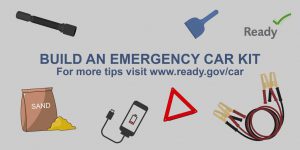The National Weather Service’s latest update early this morning (247 AM Tue Feb 19) places the surrounding NOVA Community under a Winter Storm Warning in effect from 1 AM to 7 PM tomorrow (Wednesday).
What does this forecast say?
- WHAT…Heavy mixed precipitation expected. Total snow
accumulations of 4 to 6 inches and ice accumulations of up to
one tenth of an inch expected. - WHEN…From 1 AM to 7 PM EST Wednesday.
- ADDITIONAL DETAILS…Travel could be very difficult. The
hazardous conditions could impact the morning or evening
commute.
What precautionary/preparedness actions should be taken?
- Make sure you are signed up for NOVA Alert and monitor the College’s website for details on our operational status.
- When venturing outside, watch your first few steps taken on
steps, sidewalks, and driveways. Expect icy and slippery conditions that may increase your risk of a fall and injury. - A Winter Storm Warning means significant amounts of snow, sleet and ice will make travel very hazardous or impossible. Exercise caution if you travel.


